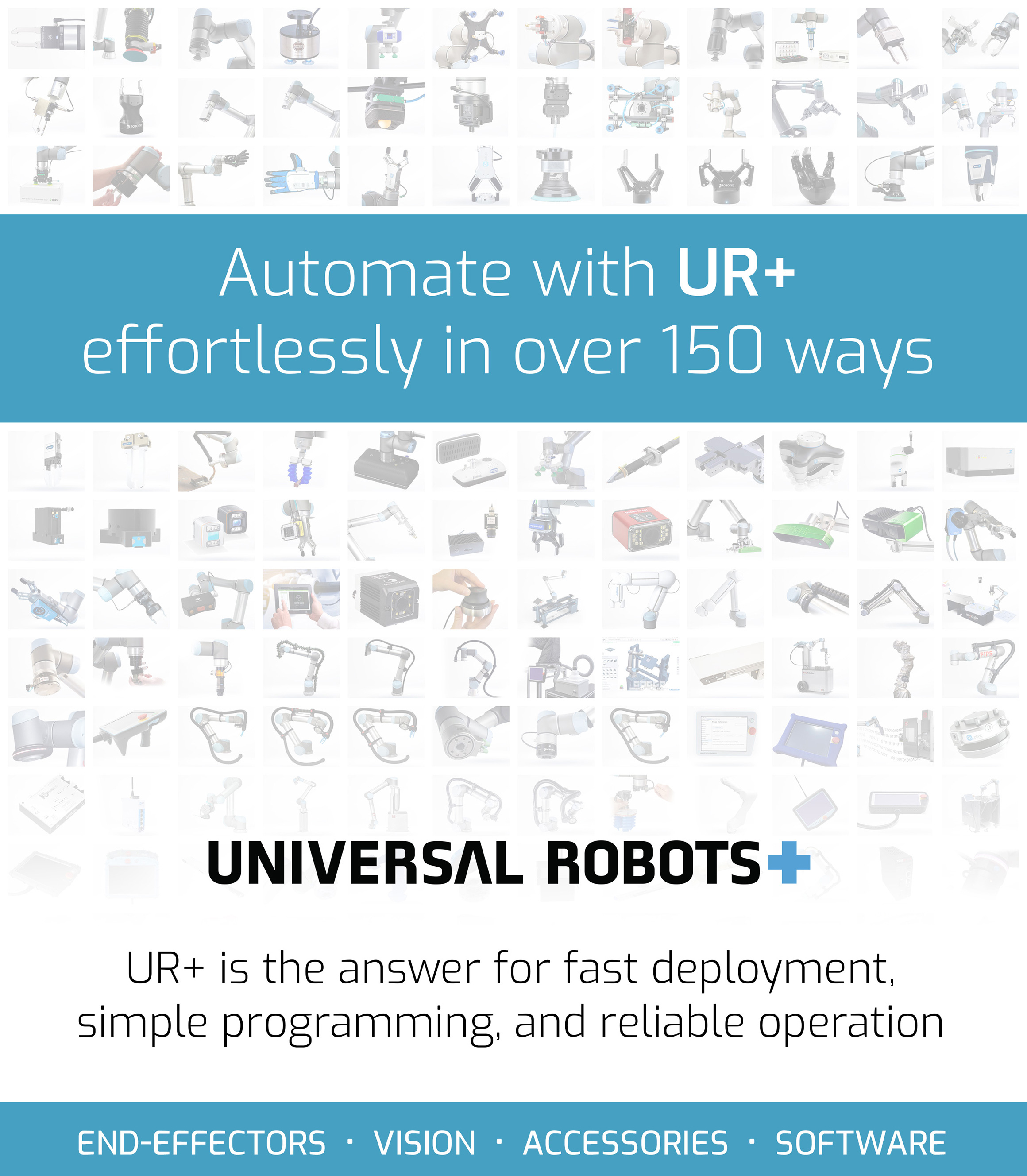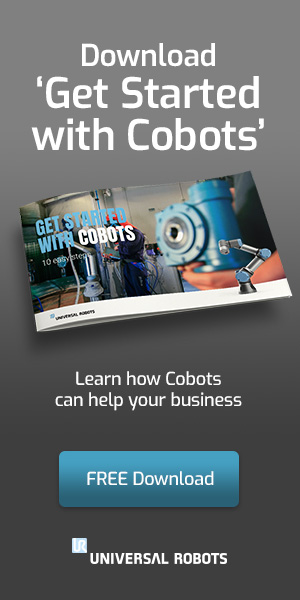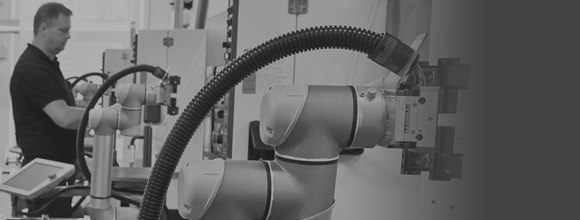
Issue Number 4
Featured Article
The Universal Robots Ecosystem and Why It Works
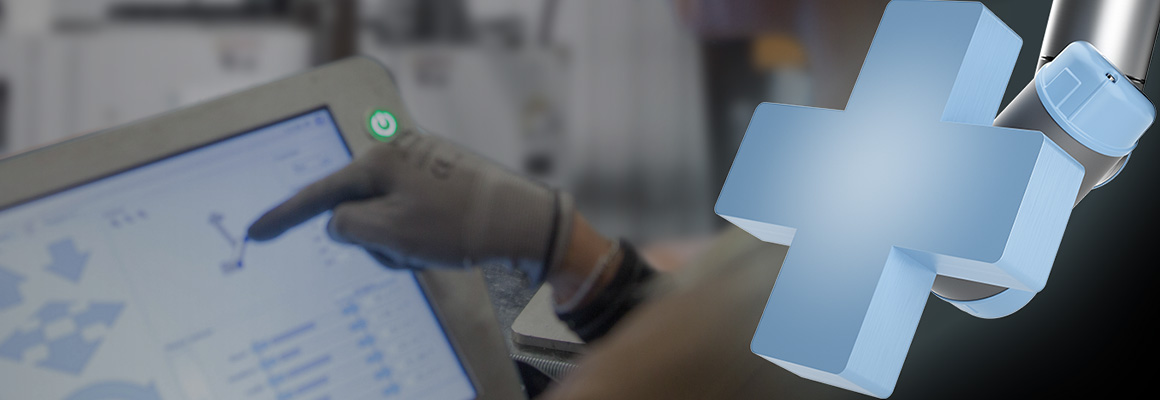
Robot27 President Doug Spinn explains why UR+ is the new “plug and play” of the robotics world
Remember what it was like to set up a PC in the 80s and 90s? I have not-so-fond memories spending many hours trying to connect to a printer, configuring ports and IRQs to make a graphic card work, or possibly just paying someone a lot of money to do it for me. Then, “plug and play” came along and eventually almost anyone (well maybe not Grandma!) could hook up a printer, install any software, and do basic configuration themselves.
Today, the robot world is about where PCs were back then. Sure, there are a lot of things you can put on the end of a robot arm, but you will still face a lot of challenges. First, there is no universal mount, so you will need to buy or make a special mounting bracket. Then, the electrical connections are not standardized, and you never know up front if you can make it work. Days can be spent reading vague technical manuals written by engineers for engineers, translated from a foreign language. You will probably need to hire a professional to help you through it, and it can be expensive.
Universal Robots shook up the robotics world with its ecosystem of Universal Robots+ products. UR+ is the new “plug and play” of the robotics world. With over 150 products already listed, UR+ is the largest ecosystem of certified-compatible products available in the robot world. In order to have a product certified for UR+, it must be tested to work well with all of UR’s products, but, most importantly, it must also be easy for a user to deploy on their own. All the mounting and electrical hardware is included along with an easy-to-follow quick start guide that bypasses the incomprehensible manual.
As the ecosystem grows, end users will be able to select the products they need, receive all the parts, set it all up, and have their automation cell running in a matter of hours instead of days or weeks.
Does this eliminate the need for integrators? Not necessarily. There will always be more complex projects that will require integrators – computer technicians did not disappear after “plug and play” came along, did they? Technicians today have more complex and interesting jobs instead of wasting their time with tedious troubleshooting. “Plug and play” ecosystems have the effect of freeing up talent in the industry to reach new heights instead of wasting their valuable time simply making one device talk to another.
Universal Robots shook up the robotics world with its ecosystem of Universal Robots+ products.
Robot27 is a huge supporter of the UR+ initiative. Last year, we began writing URCaps commercially – those are the custom software drivers and interfaces that most devices need to easily communicate with Universal Robots’ products. End-of-arm accessory suppliers contract with us to assist in making their devices compliant to the UR+ standard and we are thrilled to be a part of it. Universal Robots and UR+ set out to change the way companies, especially small ones, deploy robotic automation. I see the tremendous value of UR+ and look forward to assisting with the growth of the UR+ ecosystem.
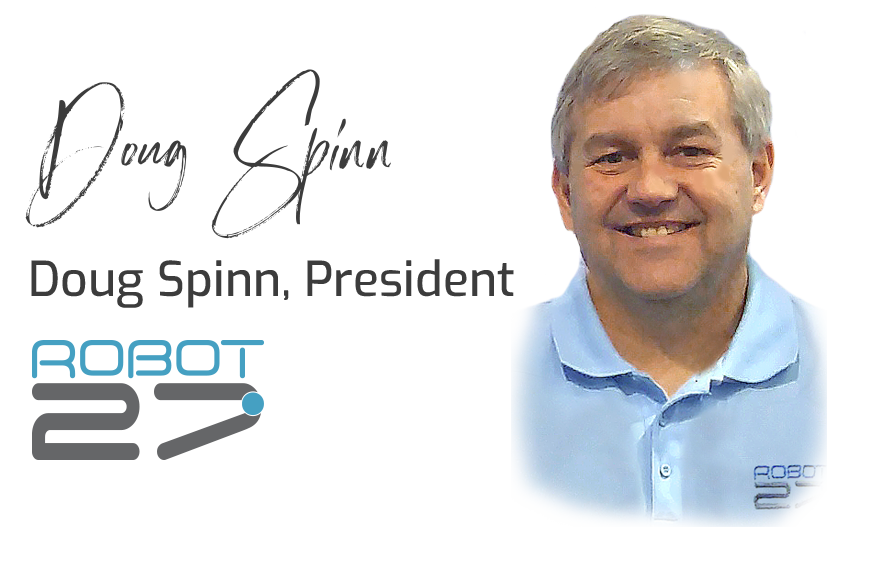
The Benefit of a UR+ approved product
Both users and manufacturers of robot accessories can derive great benefit from having a UR+ approved product.
Manufacturers get instant exposure to the users of over 35,000 UR robots who are looking for solutions that are guaranteed to interface with their UR product.
Users get products that have been tested and certified by UR to integrate at a high level that makes their usage seamless.
The testing process to have a UR+ certification is extensive –
Not only must it be easy to install and use, but it must also not interfere with the operation of the robot or other accessories. The testing process is far more strict and thorough than anything popular smart phone brands do to approve items for their app stores, because a robot is far more complex than a phone.
If you are a Universal Robots user and would like to suggest a product for inclusion into the the UR+ program, click here so we can discuss your suggestion.
If you are a manufacturer of robot accessories and would like to investigate how to get your products into the UR+ Ecosystem, click here so we can connect with you.
UR Cobots Featured in Retooled Google Robotics Program
Since 2013, Google has been retooling its robotics program. The New York Times recently reviewed some of the new technology the tech conglomerate has been working on. Google’s researchers are currently focusing on machine learning – one of the hottest topics in collaborative robotics. The article notes that “machine learning – not extravagant new devices – will be the key to developing robotics for manufacturing, warehouse automation, transportation and many other tasks” in the coming years.
At Google’s new lab, two UR5 cobots were being used in their application called TossingBot. The first was equipped with an OnRobot 2-finger electric gripper and was using an overhead camera system and machine learning environment programmed by Google to pick random objects consisting of ping-pong balls, plastic bananas, wood blocks, and other items out of a bin and tossing them several feet across the room into a plastic box held by the other UR5.
According to the article, it took about 14 hours of trial and error for the cobot with the gripper to learn from scratch how to locate and throw each of the random items into the plastic bin with 85 percent accuracy. When the program was first started, the cobots did not know how to throw any of the items in the bin. For comparison, researchers laden with the same task had about 80 percent accuracy.
This impressive marriage of physics, cobots, and a style of machine learning that google Google calls “deep learning” could shape the future for companies like Amazon and UPS. The Times notes that “humans sort through items that move in and out of distribution centers. A system like Google’s could automate at least part of the process…” which would certainly lead to faster order placement, faster product delivery, and lower costs for consumers.

Robot27 Can Help
From conceptual planning to final installation, Robot27 is your helping hand in automation. We provide the services you need – from fully engineered, turnkey automation cells to educating and consulting with your team on in-house projects. Once your cobot cell is successfully operating, Robot27 does not disappear. We are always available to answer your questions, revisit existing projects, or embark on new automation challenges. With support from Robot27’s knowledgeable team, your cobots are in good hands.
Does your cobot need to communicate with other equipment? Robot27 is equipped to handle these situations, too. With over 25 years of software development experience, we can easily streamline your ability to communicate with other machines or perform varied tasks with an easy-to-use interface.
You can learn more about Robot27 at our website – Robot27.com
